Venice, the city of canals and gondolas, is much more than just a dream destination. With its unique architecture, romantic bridges and fascinating history, this floating city is an unforgettable experience for any traveller.
But where do you start to make the most of the Serenissima? In this comprehensive guide, you’ll find all the practical information you need to explore Venice: from must-do activities to not-to-be-missed museums and churches, plus a selection of the best places to eat and stay. Let us guide you!
This article contains affiliate links, which means that I earn a commission if you book an activity by clicking on one of these links. It doesn’t cost you anything extra, but it helps me to develop Culturez-vous and bring you new travel guides for free. Thank you for your support!
Venice in brief
- How to get there ? You can get to Venice by train, with a station located right in the city centre. The easiest way to do this is to go to Milan and then take a connecting train to Venice. In total, allow 10 hours’ travel time from Paris. The other option is of course by plane, with a journey time of 1h30 from Paris.
- When to go? May, June, September or October are the best months : it’s neither too hot nor too cold. In July and August, watch out for high temperatures and crowds of tourists. In winter, you can enjoy the festive atmosphere, but this is also a good time for “aqua-alta”, the high tide that can flood some streets.
- How long to stay ? Venice is a densely-packed city with plenty to see and do. A minimum of 3 days is a great way to discover it, ideally plan 5 days to explore it properly or even 7 to take your time and not get frustrated.
- How to get around Venice is a city without cars or bicycles. You can get around on foot or by boat. The boat buses / vaporetto operated by ACTV are the most attractive, with passes valid for several days (see the rest of this article). Water taxis are very expensive (around €70 to go down the Grand Canal / €110 to go to the airport), while gondolas are used more for folklore than for getting around, costing €90 per half-hour.
Did you know?
There are 400 gondoliers in Venice, a trade that is handed down from father to son. It was only in 2009 that a woman was allowed to be a gondoleria, however no non-Venetian can become one.
- For whom ? For everyone ! Venice isn’t just for lovers, it’s a sumptuous and exciting city that can also be discovered solo, with friends or with the family. But beware: the narrow streets and numerous bridges make the city difficult to navigate with a pushchair or wheelchair.
The history of Venice
Venice was founded in the 5th century by people fleeing barbarian invasions after the fall of the Western Roman Empire. Settling in the marshy lagoon, the first inhabitants built a unique city on the water.
Gradually equipped with a powerful fleet and a flourishing economy, Venice became a major maritime and commercial power in the Middle Ages, linking Europe to the Orient through its maritime exchanges. The Republic of Venice, known as ” Serenissima “, prospered for centuries, leaving its mark on the Renaissance through its art and architecture.
After its decline, it was conquered by Napoleon in 1797 and annexed to Italy in 1866. Today, Venice is world-famous for its canals, its heritage and its carnival.
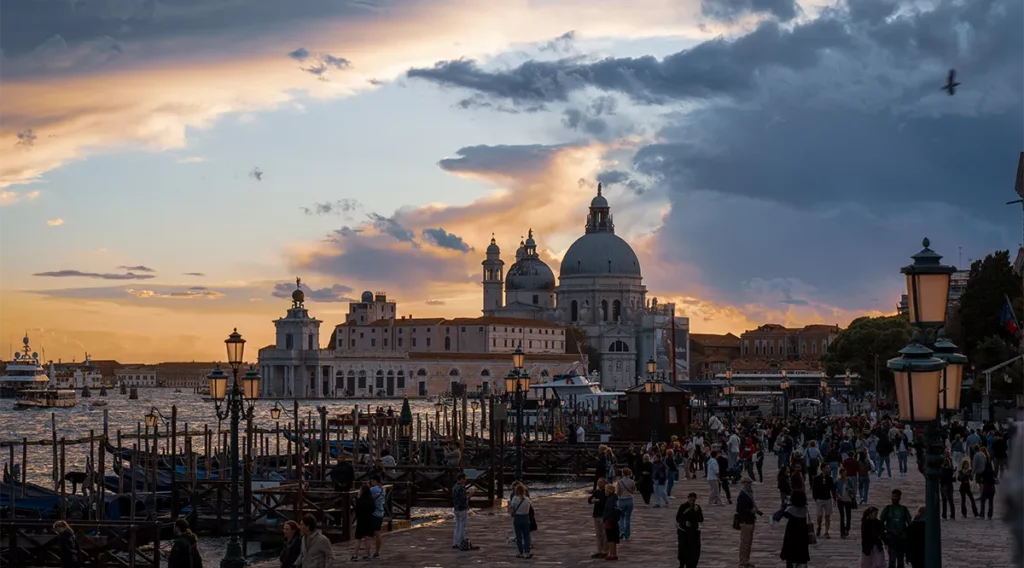
The 10 must-see sights in Venice
Discovering Saint Mark’s Square
Situated in the heart of Venice, Saint Mark’s Square is the city’s most popular tourist destination, and it’s easy to see why! Surrounded by St Mark’s Basilica, the Campanile and the Doge’s Palace (Palazzo Ducale), it’s a must-see.
The large number of tourists – especially during the summer – spoils the experience of discovering this square a little, but it’s a must-see.
Entering St Mark’s Basilica
It’s impossible to miss this basilica with its 5 domes, built in 828 and rebuilt in 976 after the fire that ravaged the Doge’s Palace.
The interior seems to be covered in a sheet of gold, with 4,000 m2 of mosaics covering the walls and vaults. Unfortunately, photographs are not allowed inside the basilica, so I can’t take you inside.

Admission is charged (€6) and you need to book well in advance to get a place, but you can enter the basilica free of charge, without booking, through the side entrance on the left, reserved for people wishing to pray or attend a mass.
Saint Mark’s Square
Online ticketing
Book a small-group guided tour with restricted access
Attention : This is a place of worship, so your shoulders and knees must be covered, and photographs are not permitted inside.
Go to the top of the Campanile
At 98 metres high, the Campanile dominates Venice. You can go under the bells, 60 metres up, and enjoy a beautiful view of the whole city. You only need a lift to get up there.
Admission costs €10, and you can buy your ticket there or online (€12) if you prefer not to queue. Once you reach the top, you can stay as long as you like to admire the view.
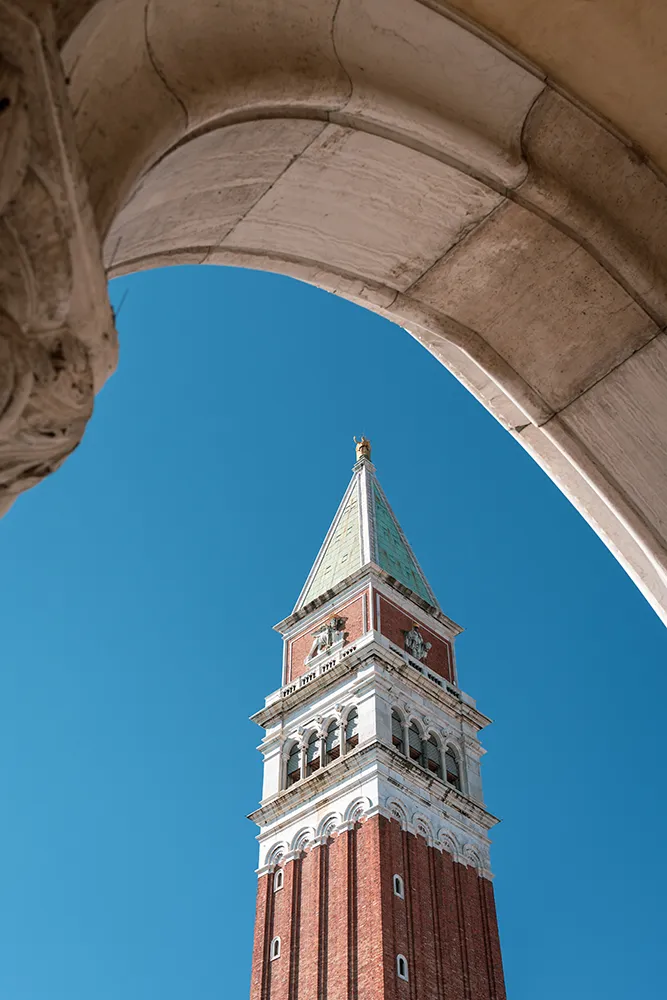
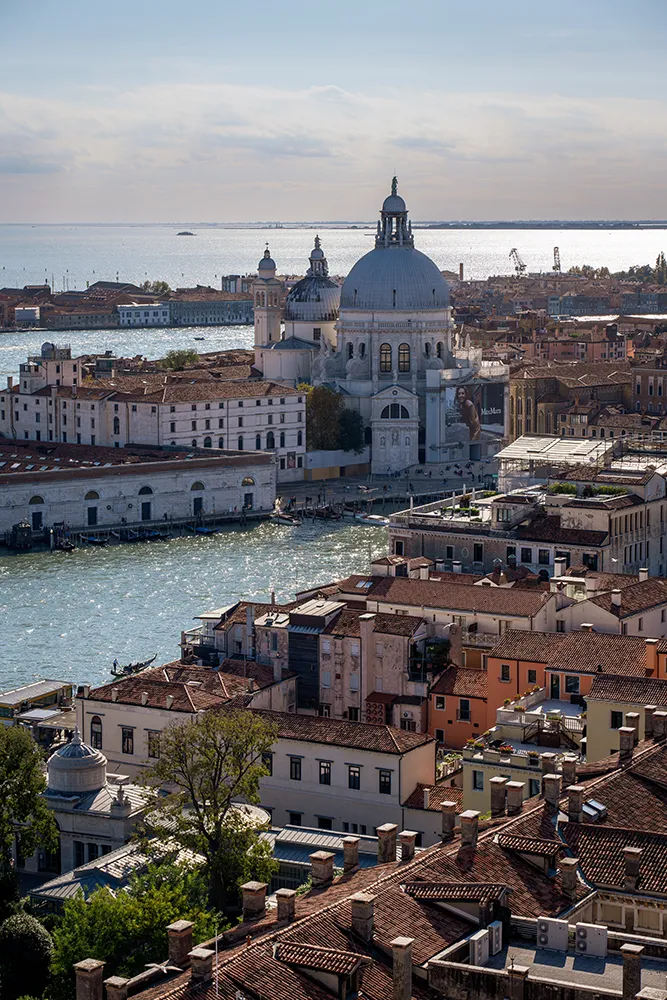
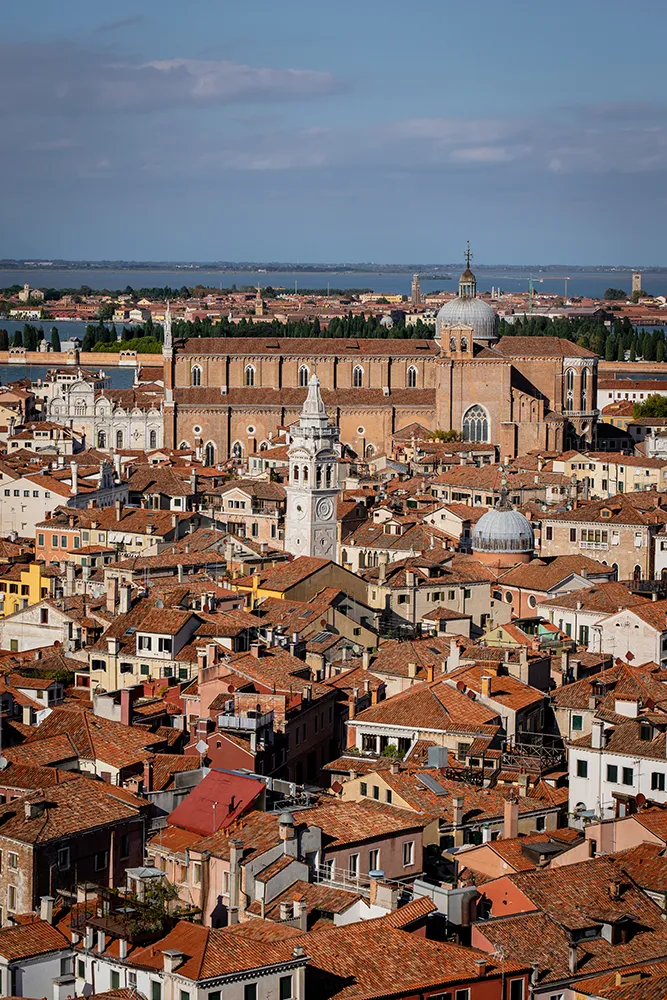
Saint Mark’s square
Online ticketing
Visit the Doge’s Palace (Palazzo Ducale)
This famous palace was the official residence of the Doges of the Republic of Venice. Built from the 9th century, its current appearance dates from the 15th.
What is a Doge?
The Doge of Venice was the city’s chief magistrate. Elected for life, he could decide on war or peace, command armies or preside over the Senate. However, his decisions were subject to a countervailing power, as he could not pass a resolution without the assent of the Council of Ten.
Its many rooms are each more sumptuous than the last: it takes almost 2 hours to fully explore the palace and understand how Venetian power functioned, with the Senate (which passed laws), the College (the governing body), the Council of Ten and the courts.
The ceilings are adorned with paintings by the great Venetian masters such as Tintoretto and Veronese. Not to be missed: the Council Chamber, as large as 5 tennis courts to accommodate all the city’s nobles, overlooked by Tintoretto’s “Paradise”.
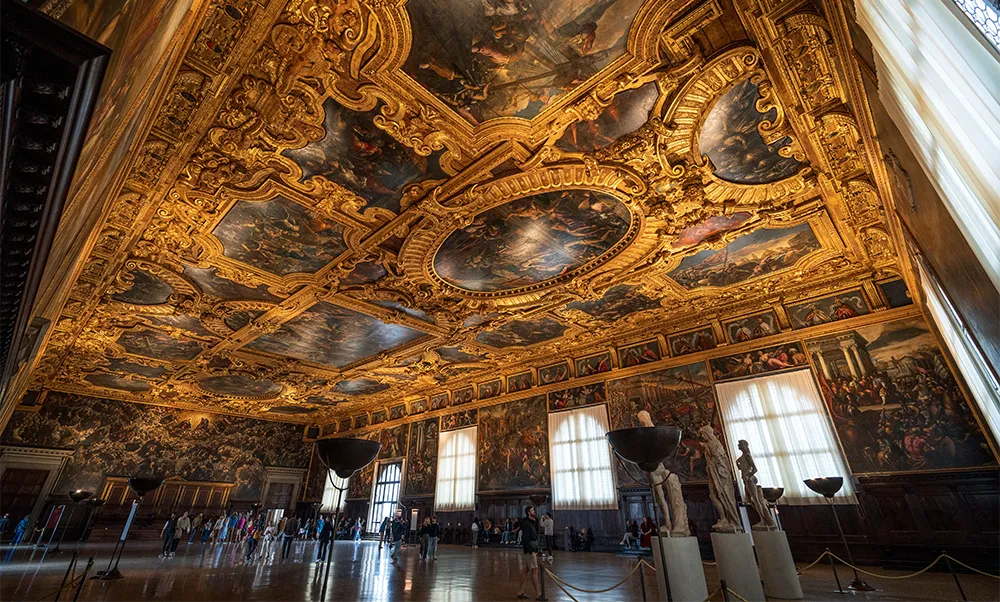
Saint Mark’s square
File-saving ticket
My advice: opt for a guided tour
Guided tours give you access to rooms that are usually closed to the public. The “secret itineraries” will take you to the former prisons, accompanied by a guide available in French, Italian or English, to discover all the inner workings of the Palace. They are offered at just €2 more than the self-guided tour of the Palace (€32 vs €30). – Online ticketing
Wandering the streets of Venice
Once you’ve discovered Saint Mark’s Square, stroll away ! The rest of the city is much less crowded and much more pleasant to explore. Dare to get lost and wander down random alleys. In short, stroll around and soak up the wonderful atmosphere of this city, day and night, to discover all its facets.
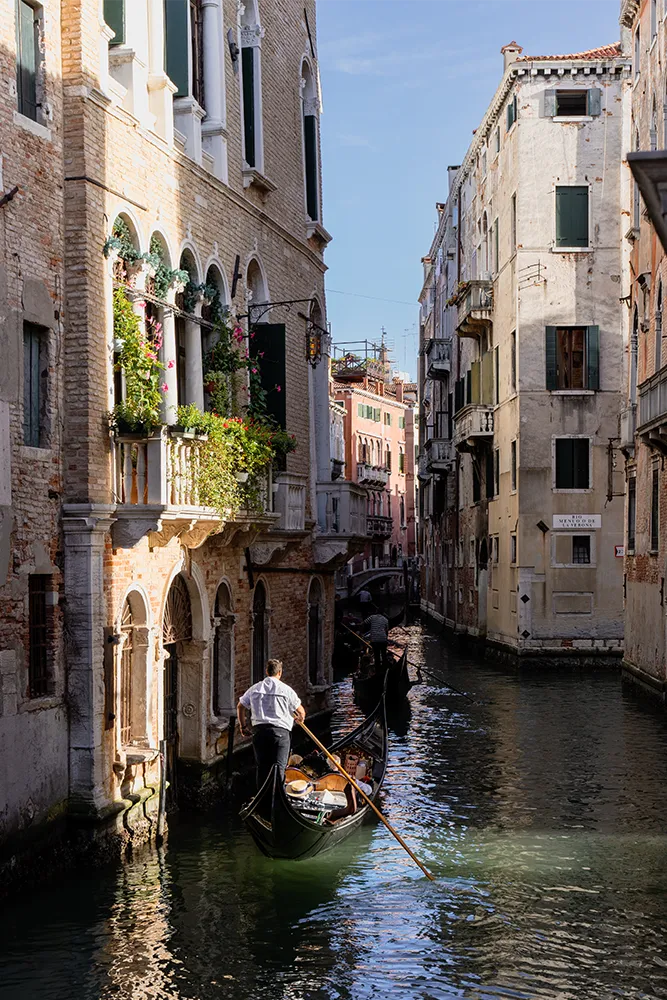
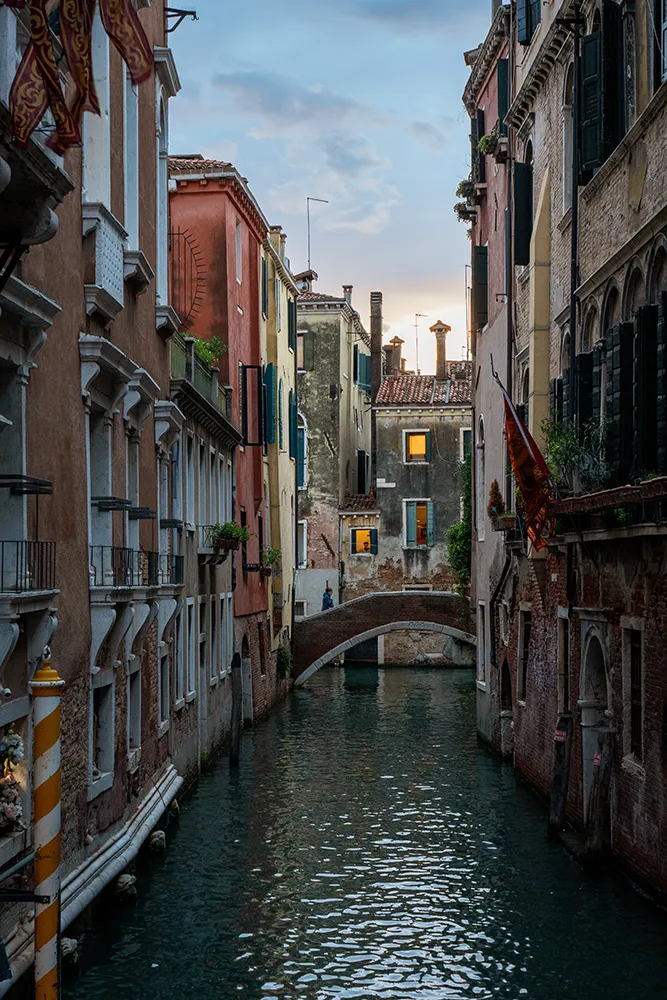
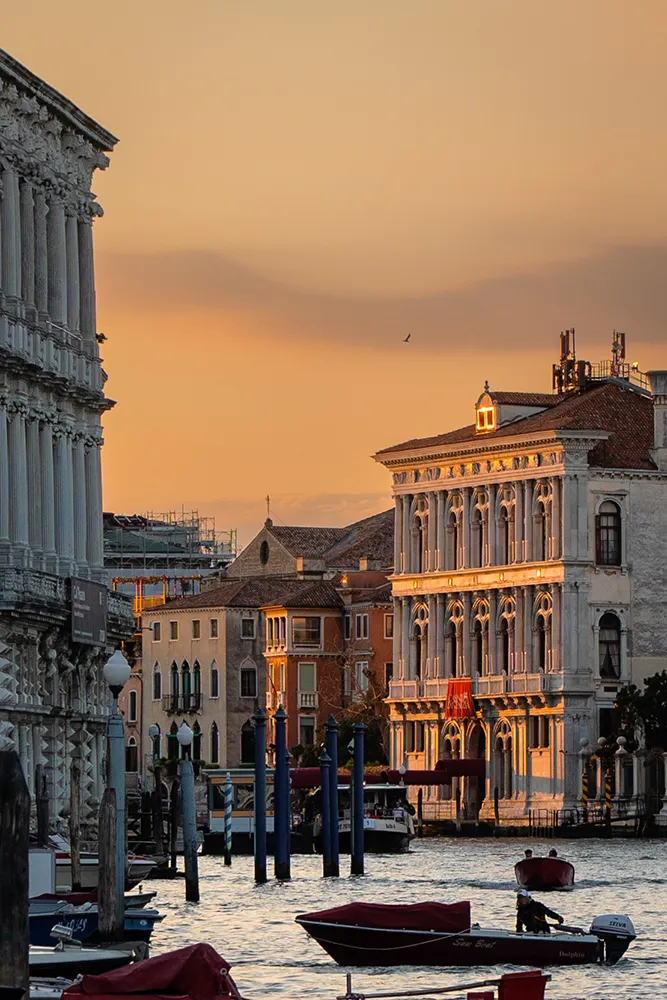
Take a boat trip up the Grand Canal
Since Venice is inextricably linked with water, the best view of the city is still from a boat, especially from the Grand Canal, which is lined with a succession of palaces, each more beautiful than the last.

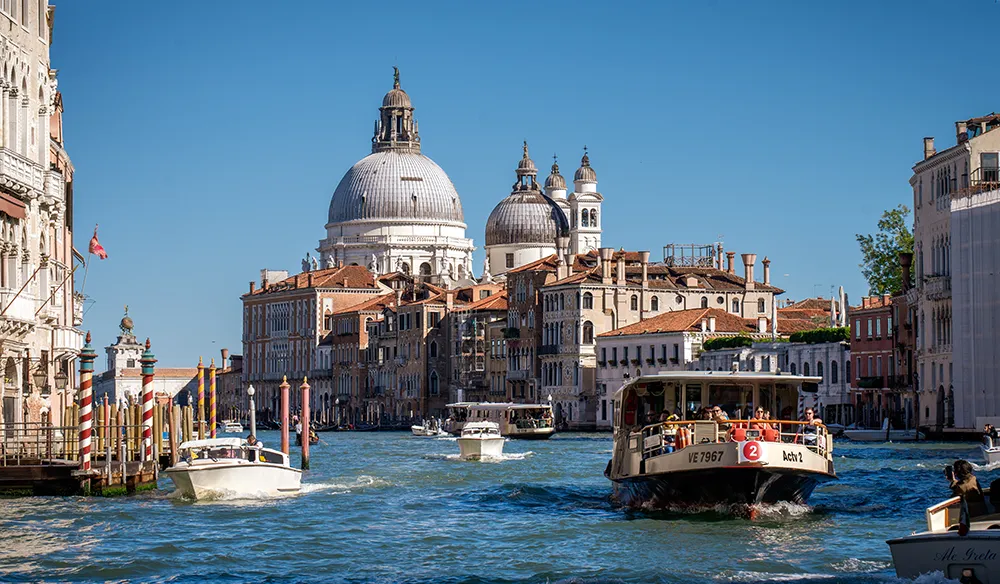
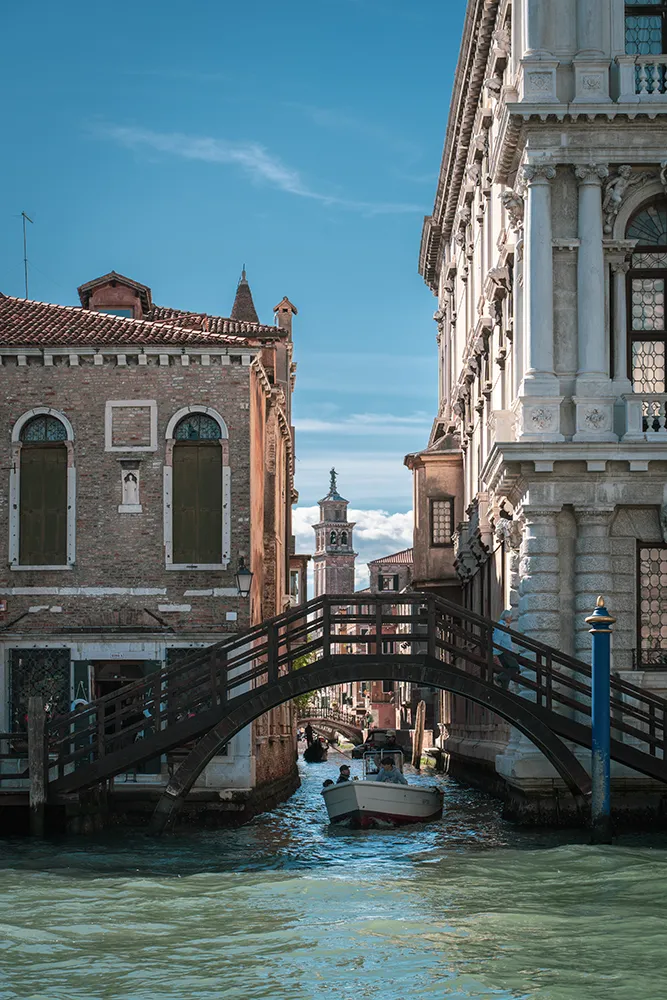
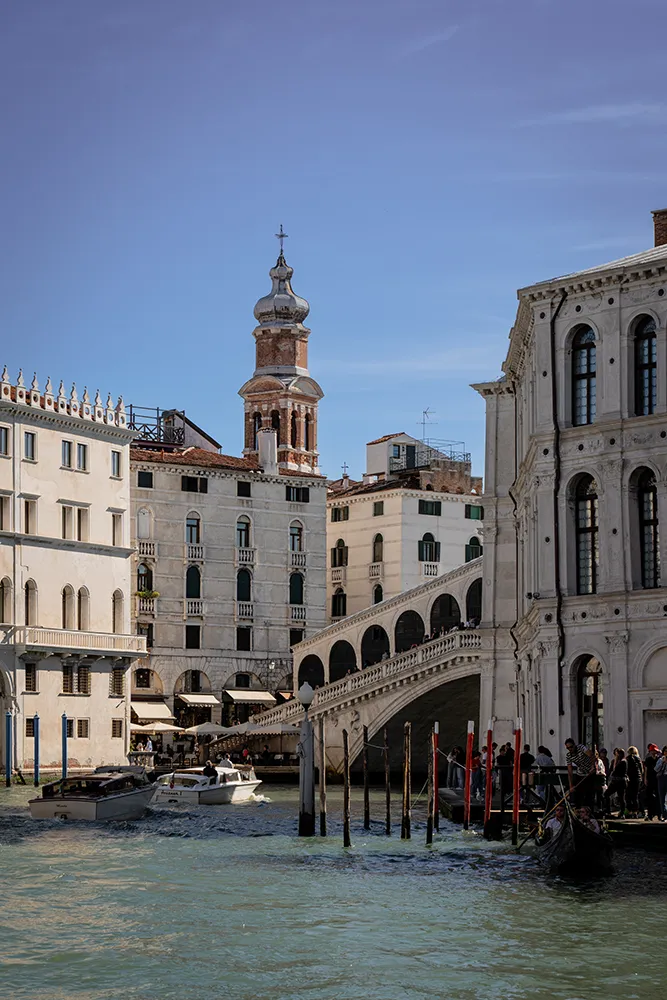
There are several options: water taxis allow you to be alone on board, but they are very expensive (€70 a way) and not exactly environmentally friendly. I recommend that you take a waterbus (vaporetto) operated by ACTV.
With this second option, the 75-minute journey costs €9.50, but you can also take multi-day passes (see the good deals later in this article).
Tips for getting the best view
Try to get the seat all the way in front ! To do this, get on line 2 at Salute in the direction of S. Marco, let everyone off (this is the terminus) and stay on board !
Go to La Fenice and see a show
Venice’s opera house, La Fenice – in French ” Phénix ” – has a name that was predestined for it : inaugurated around 1773, it was destroyed by fire in 1836 and much more recently in 1996. Rebuilt between 2001 and 2003, it is a brand new opera house, but one that has been rebuilt identically, with all its original luxury.
If you want to go and see a show, you’ll need to book in advance, as the 1,000 seats fill up quickly, but you don’t need to book if you want to visit the theatre on your own during the day.
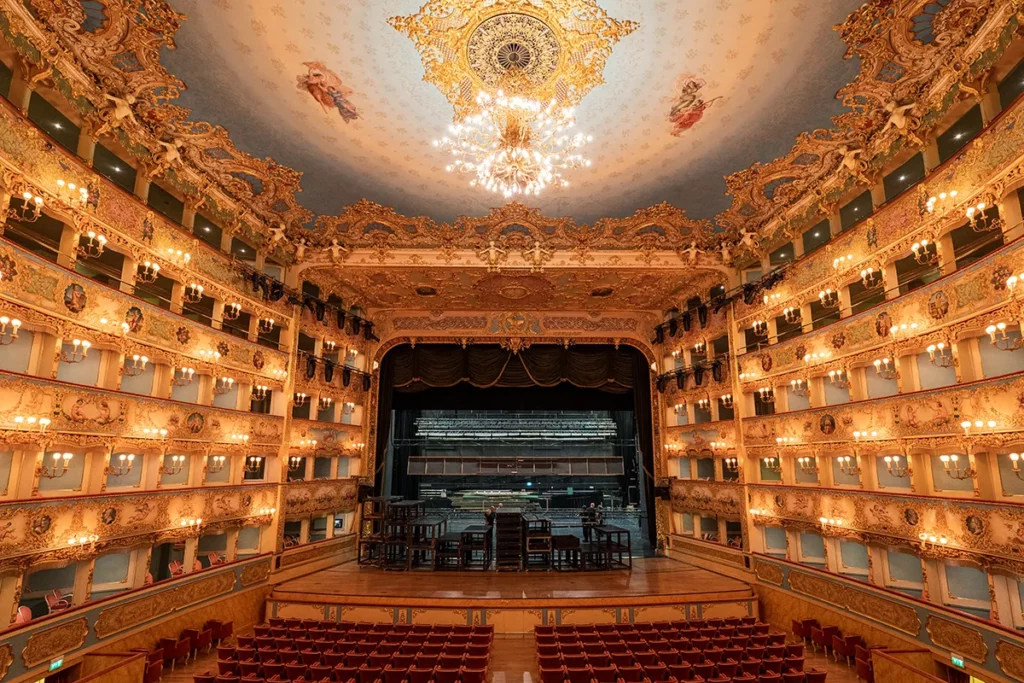
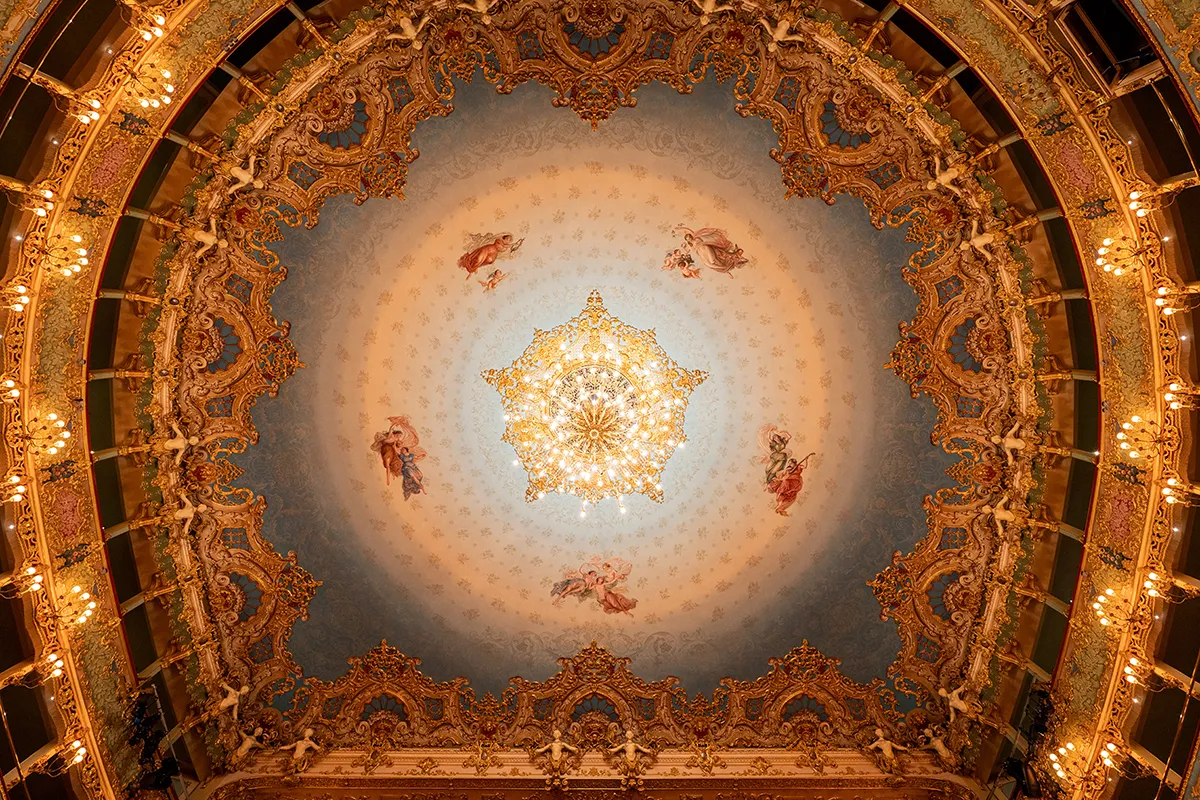
Campo S. Fantin, 1965
Online ticketing
See the Scuola Grande di San Rocco
The scuole (scuola in the singular) were Venetian institutions dedicated to art or craft guilds. The scuola at San Rocco was one of the richest in Venice, as evidenced by its palatial exterior.
The interior is no exception, decorated with more than 50 paintings by Tintoretto. The famous Italian painter devoted 23 years of his life to this monumental project.
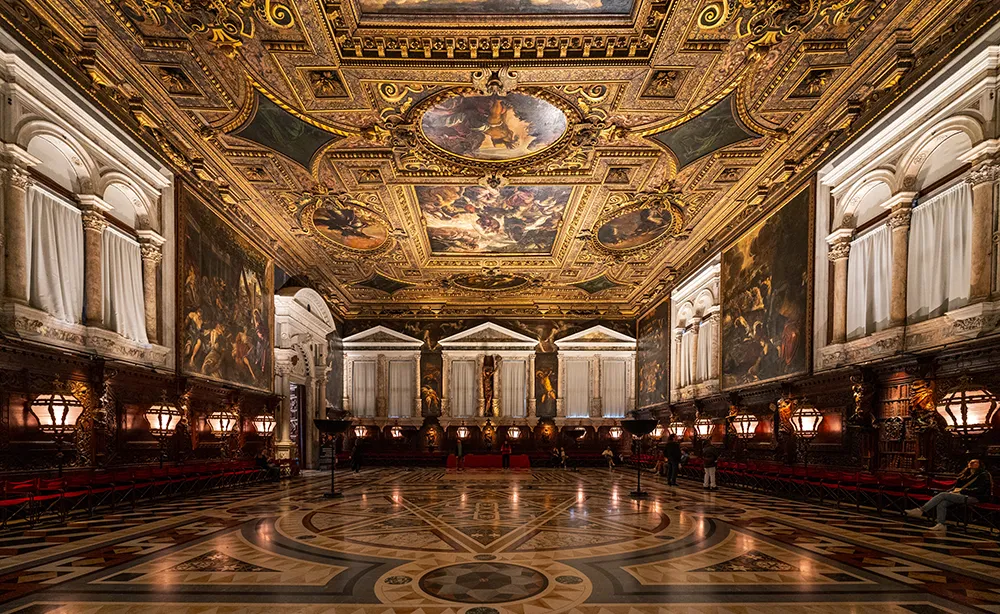
San Polo, 3054, a
€10, tickets purchased at the monument entrance
Daily, 9.30am to 5.30pm
Go to Burano, the colourful fishing village
Burano is an island located to the north of the Venice lagoon, around 45 minutes away by boat. The island is particularly well known for its lace and colourful houses, making it an extremely photogenic spot!
Like many fishermen in Europe, those in Burano received a surplus of paint from the chemical industry after the war to keep their boats afloat. The same paint was used to paint their houses and shutters, giving the town its unusual style.
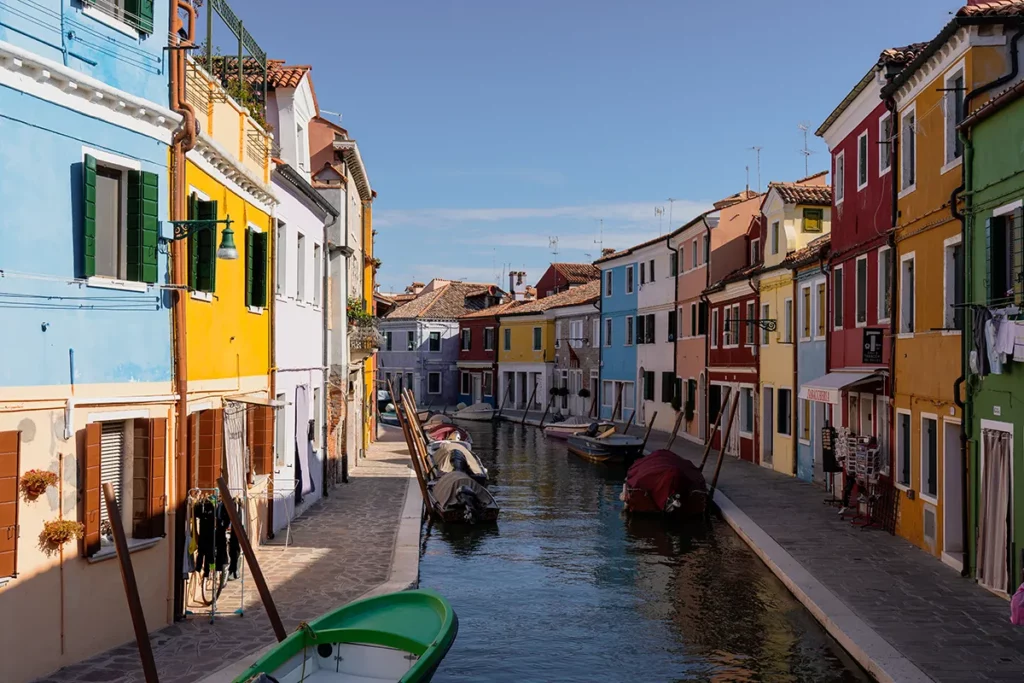
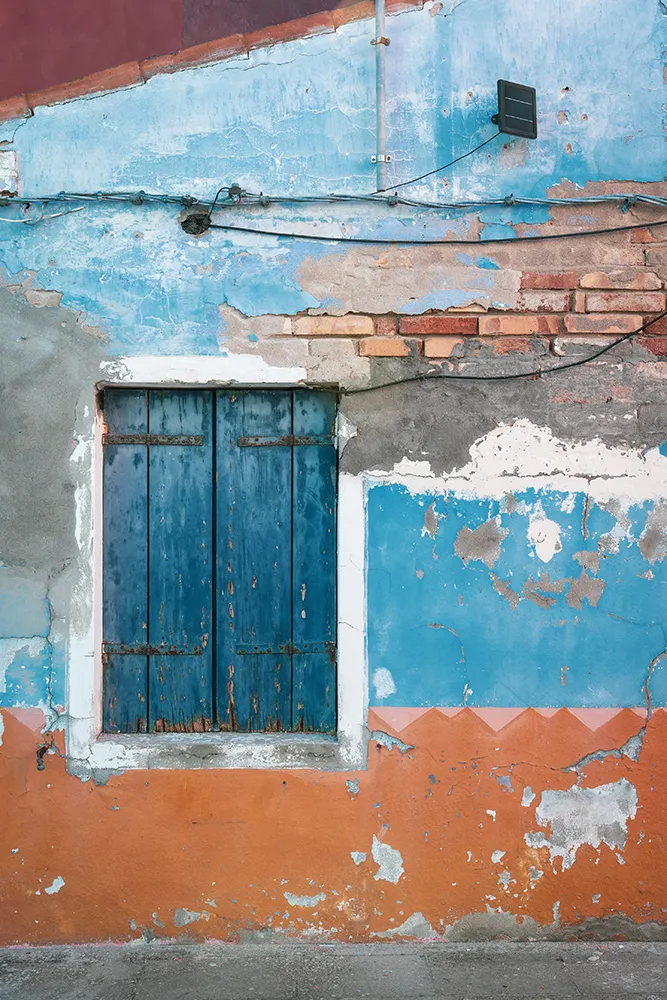
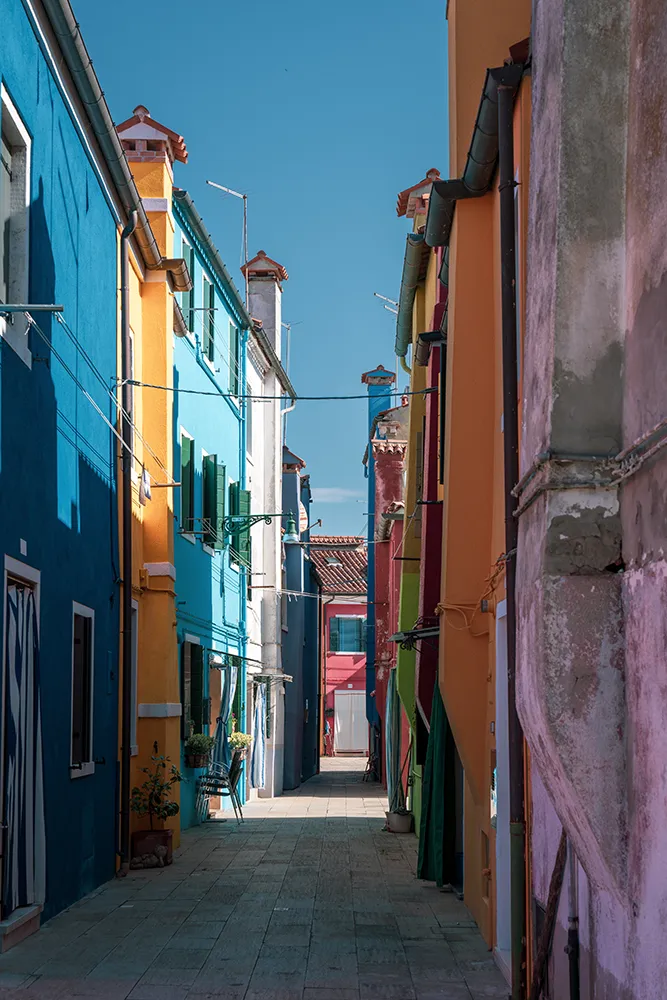
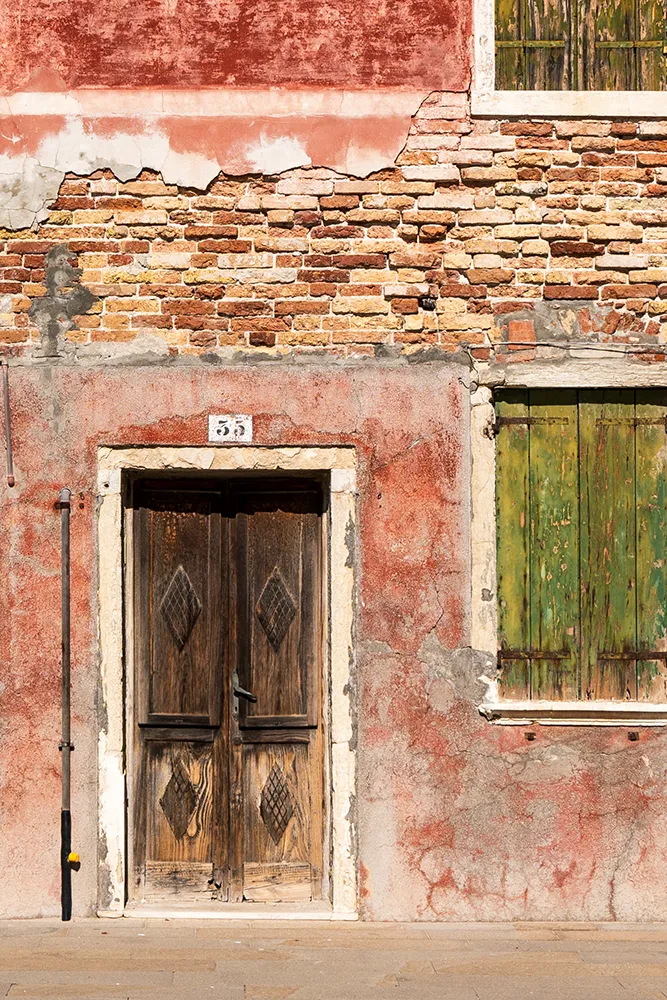

Allow 45 minutes from Venice to get there by boat with an ACTV shuttle. On site, the village is quite small, 2 hours will be more than enough to discover it.
Discover Murano, the glass capital
The other famous island near Venice is Murano, considered a great Glass capital. And it’s no coincidence that many glassmakers are based here: Venice had set them apart from the city to avoid any risk of fire.
Murano has lost much of its authenticity as a tourist destination. You have to pay to see master glassmakers at work, and it’s hard to distinguish between objects actually produced in Murano and those imported from China. The island is well worth a visit, however.
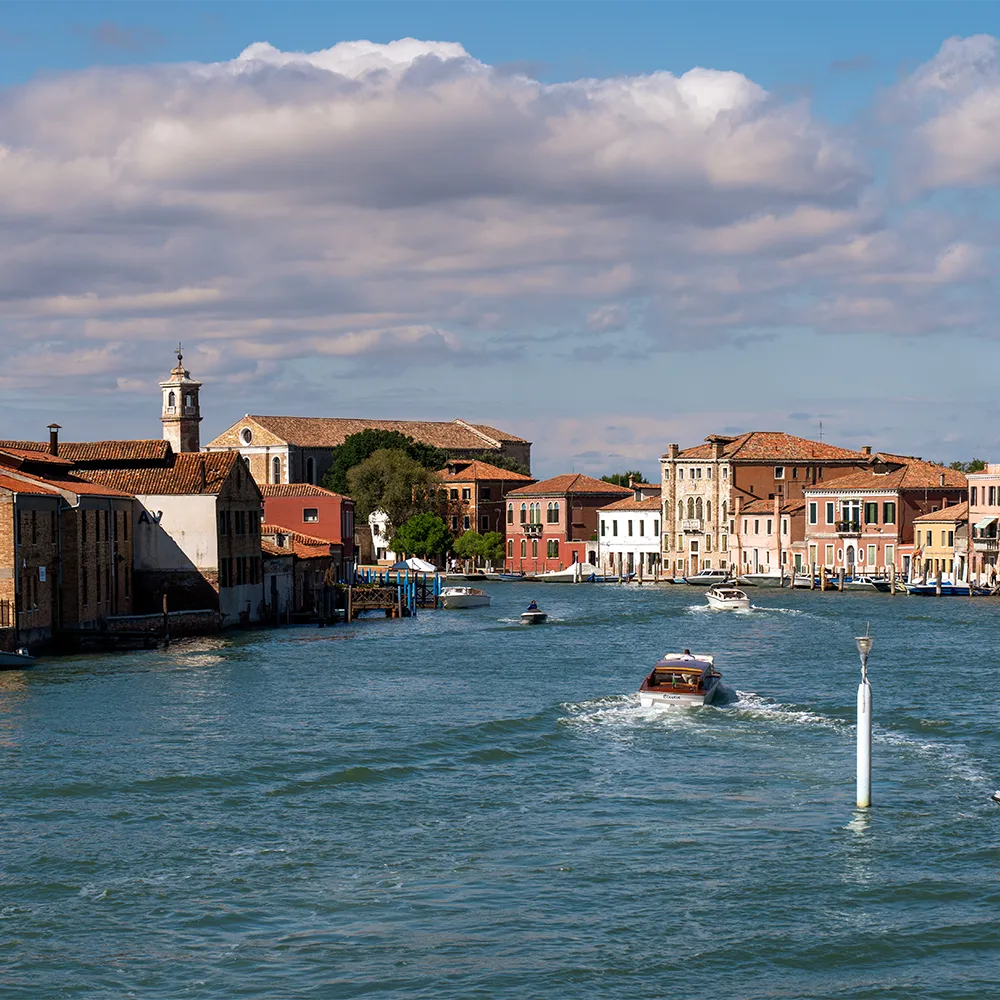
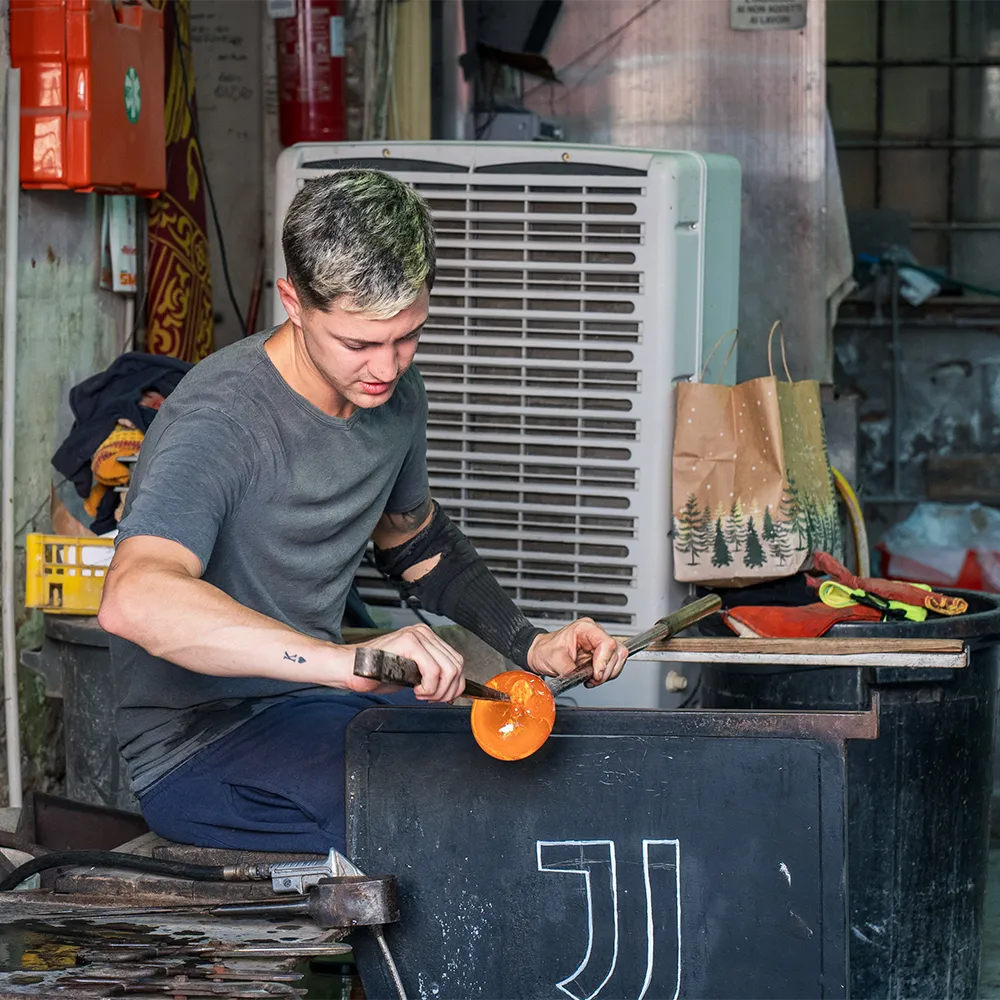
Allow 15 minutes to get there from Venice by boat with an ACTV shuttle. Murano is on the same line as Burano, so you can discover both islands in the same time.
What are the 3 must-see churches in Venice ?
There’s no shortage of churches in Venice, with over 250 of them! Some are free, others charge; some allow photos, others forbid them… in short, there are no rules, so don’t hesitate to push open their doors, sometimes you’ll be in for a nice surprise. Here are 3 churches in particular that I highly recommend :
San Pantalon
Don’t be fooled by its very sober façade planned to be covered in marble, the church of San Pantalon ended up remaining in brick. The interior, however, is magnificent: the ceiling is covered with a huge 61 x 46 metre canvas depicting St Pantaleon being received into Paradise. Created by Gian Antonio Fumiani, it is said to be the largest canvas in the world. It took the artist 25 years to complete!
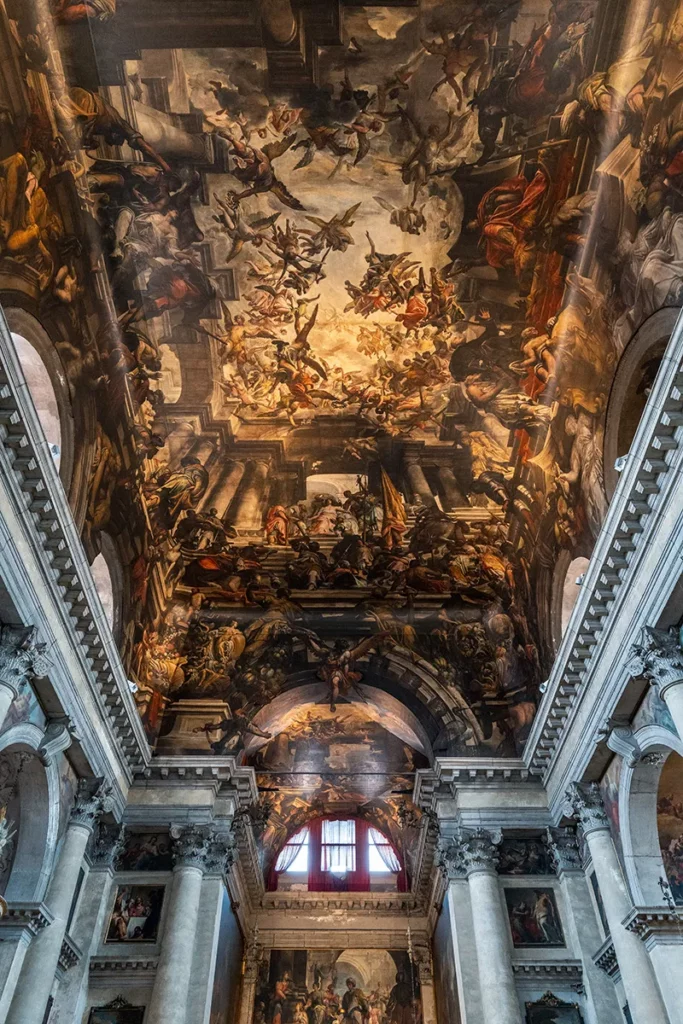
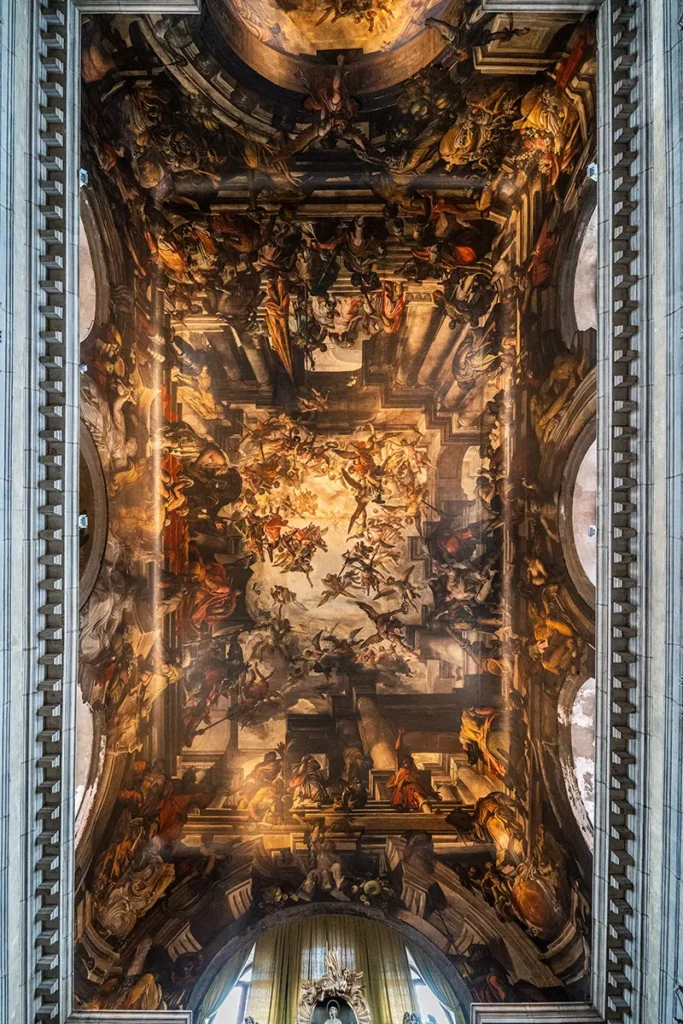
Sestiere Dorsoduro, 3703
Free admission
Mondays, Tuesdays, Wednesdays, Thursdays and Saturdays, 10am to 12.30pm and 3.30pm to 6pm ; Sundays, 9am to 12pm and 3.30pm to 6pm
Closed Fridays
Santa Maria Assunta / Chiesa dei Gesuiti
You’ll have to pay €1 to enter this church, but its splendour is well worth the small fee! With its Baroque architecture and rich décor, you won’t know where to look: there are paintings, sculptures and marble absolutely everywhere. Don’t miss Titian’s altarpiece, the Martyrdom of Saint Lawrence, the first painting on the left as you enter the church, as well as the Assumption of the Virgin by Tintoretto.
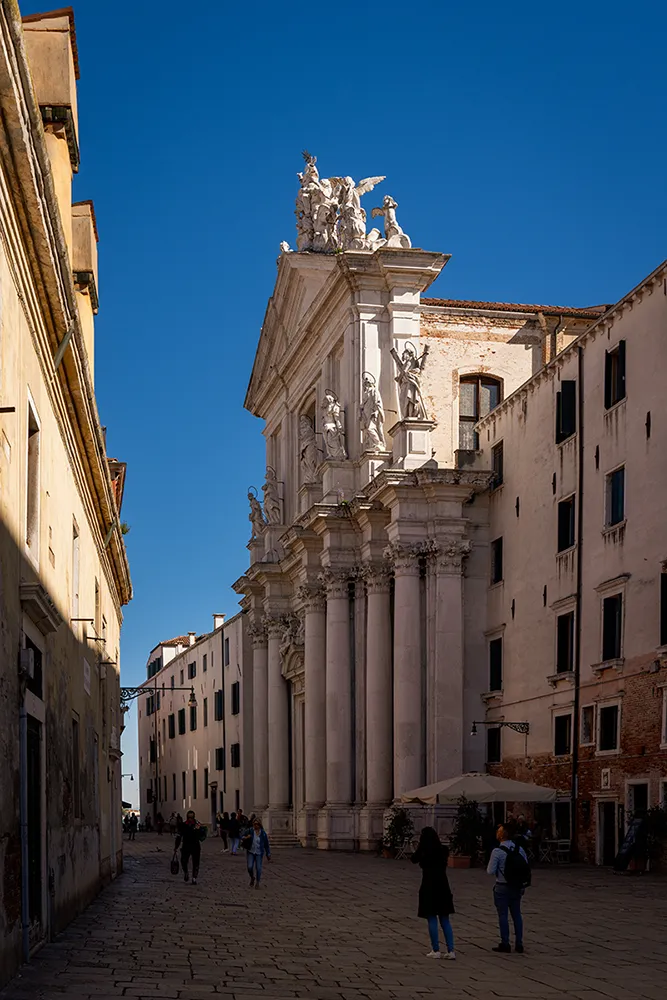
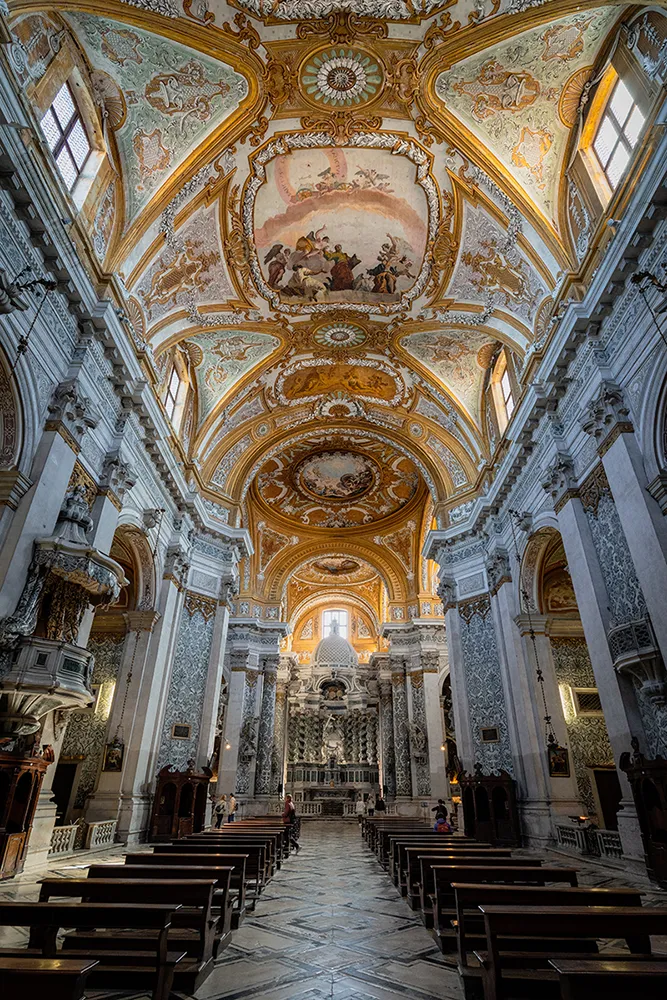
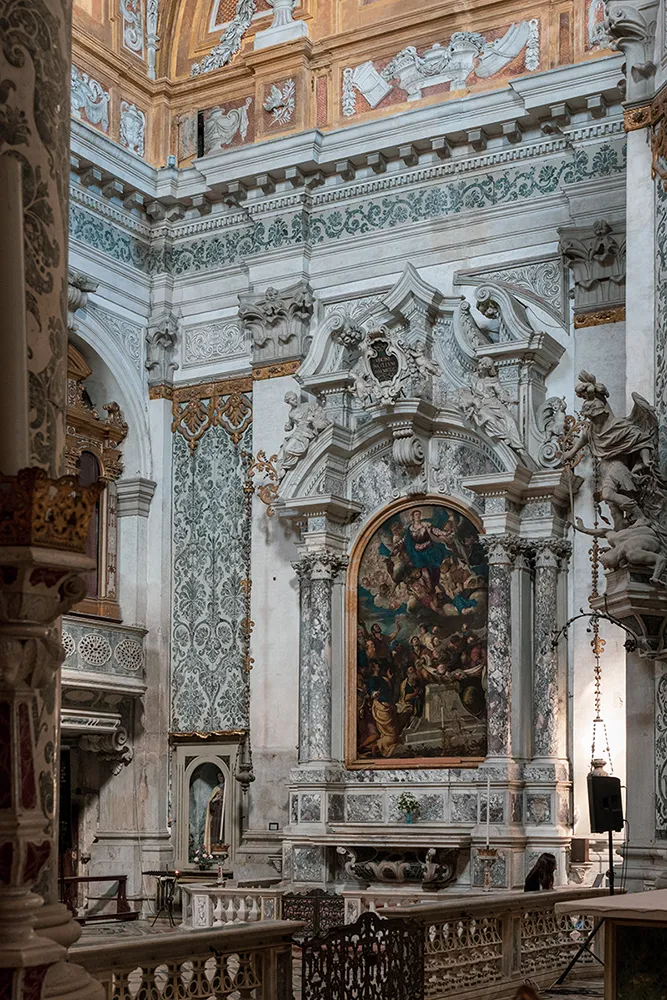
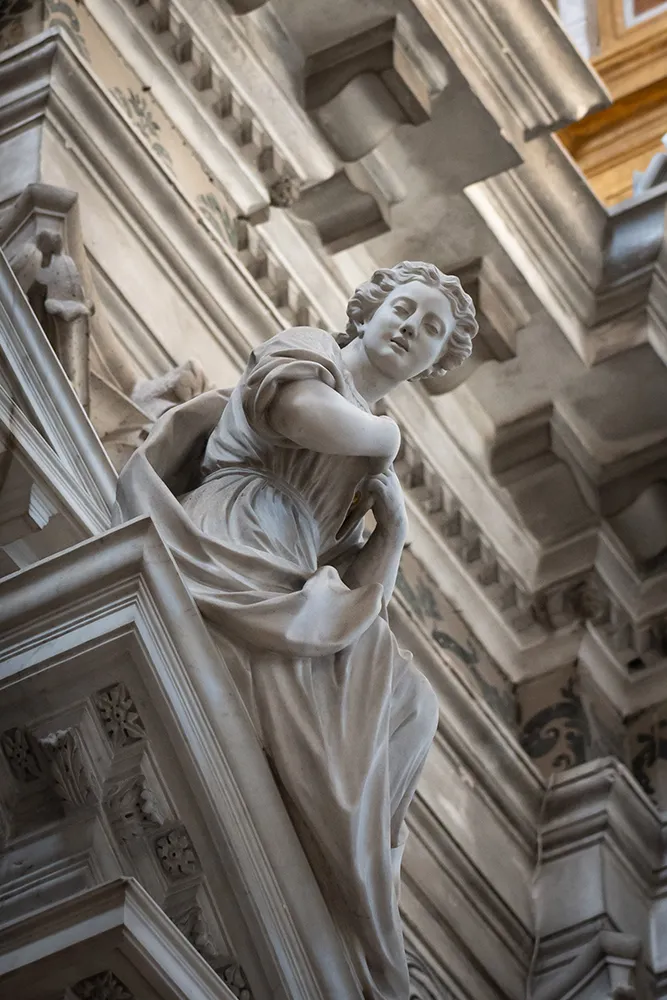
Salizada dei Spechieri, 4877
€1, payable at the ticket office at the entrance to the church
Mondays, Tuesdays, Wednesdays and Thursdays from 10.30am to 1pm and from 4pm to 6pm ; Fridays, Saturdays and Sundays from 10.30am to 1pm and from 3pm to 7pm.
Santa Maria Dei Miracoli / Church of Santa Maria dei Miracoli
This impressive church is covered in polychrome marble, giving the impression of facing a stone painting. The interior is delicately decorated and full of charm, making it one of the favourite places for Venetians to get married. Unfortunately, photography is prohibited.
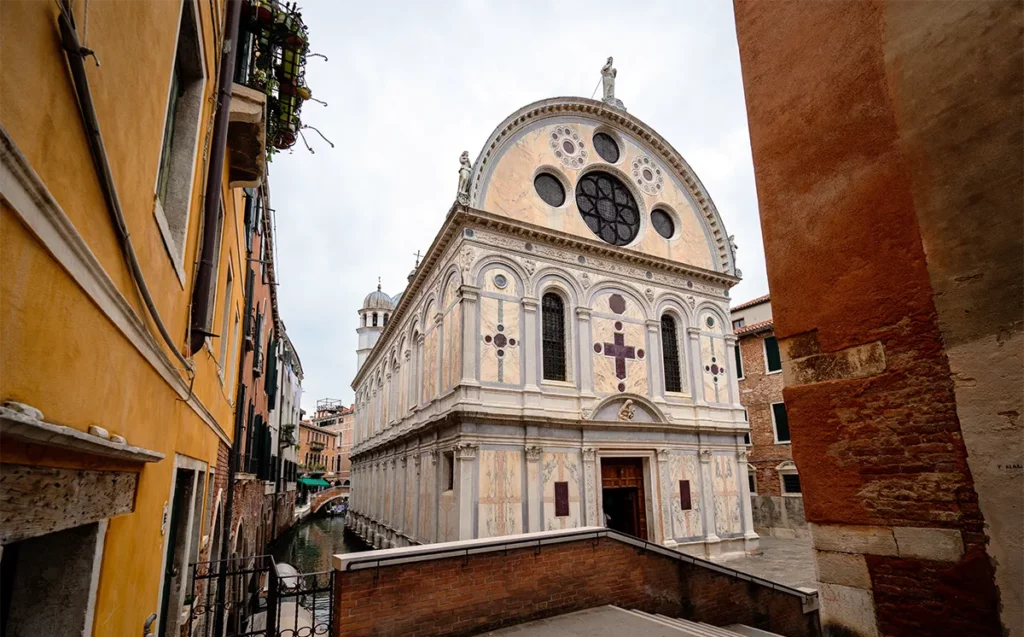
Campiello dei Miracoli
€3, payable at the ticket office at the entrance to the church
Monday to Saturday, 10.30am to 5pm, closed Sundays
The 3 must-see museums in Venice
The Ca d’Oro
The Ca d’Oro (“house of gold”) owes its name to the gold leaf that once covered its façade. Although the precious metal has now disappeared, the palace is nonetheless sumptuous. With its sculpted marble, the Ca d’Oro is certainly one of the most beautiful palaces in Venice.
Inside, the Ca d’Oro conceals a fine collection of works of art, including Flemish tapestries, European paintings (Dürer, Van Dyck, Van Eyck, Titian…) and some very fine sculptures.
The highlight of the show is the loggia on the first floor, which offers one of the finest views of the Grand Canal.
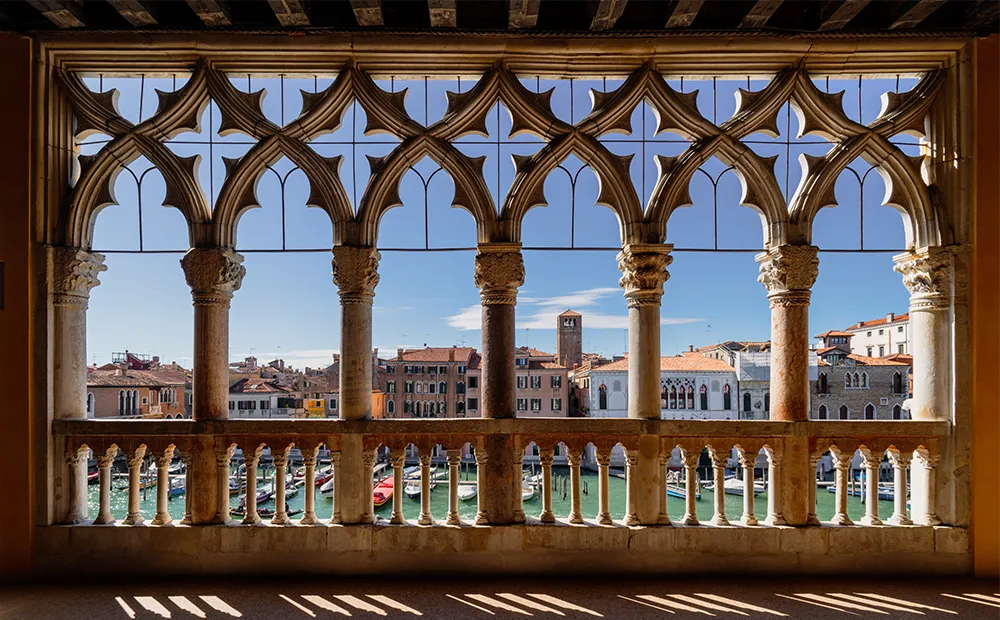
Calle Ca’ d’Oro, 3934
Daily, except Mondays, from 10am to 6.30pm
The Palazzo Grimani museo
Recently reopened after a thorough restoration, the Palazzo Grimani museum mainly houses exhibitions of contemporary art, but I recommend you go there above all to admire the beauty of its architecture as well as a small room that justifies the visit on its own : the Tribune. Located at the end of a wing of the palace, this space originally housed 130 ancient sculptures arranged over several levels. Absolutely magical!
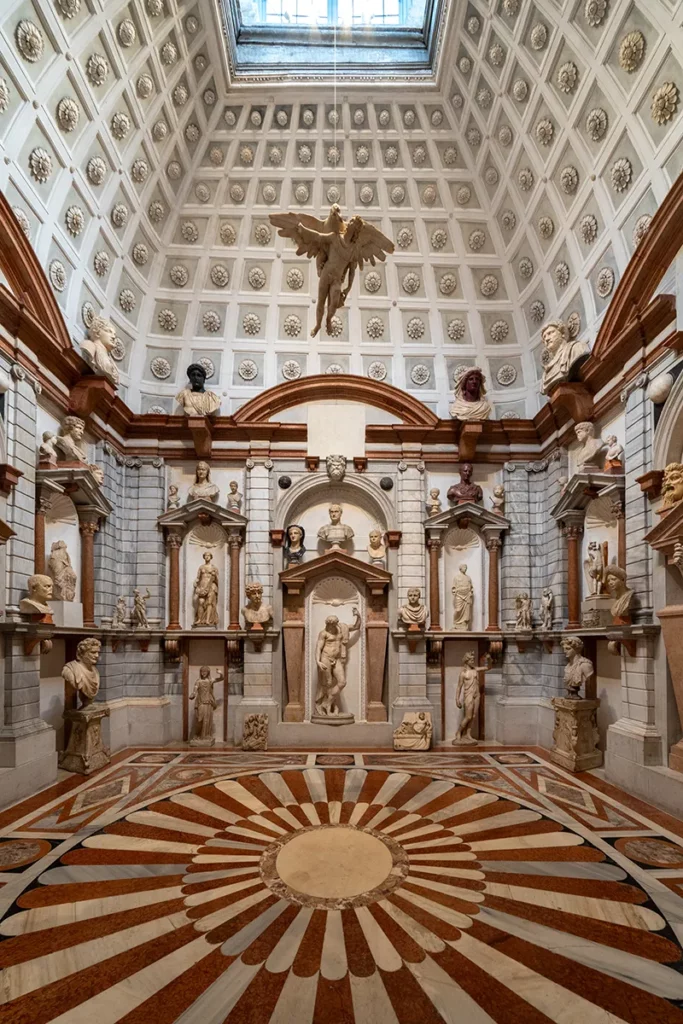
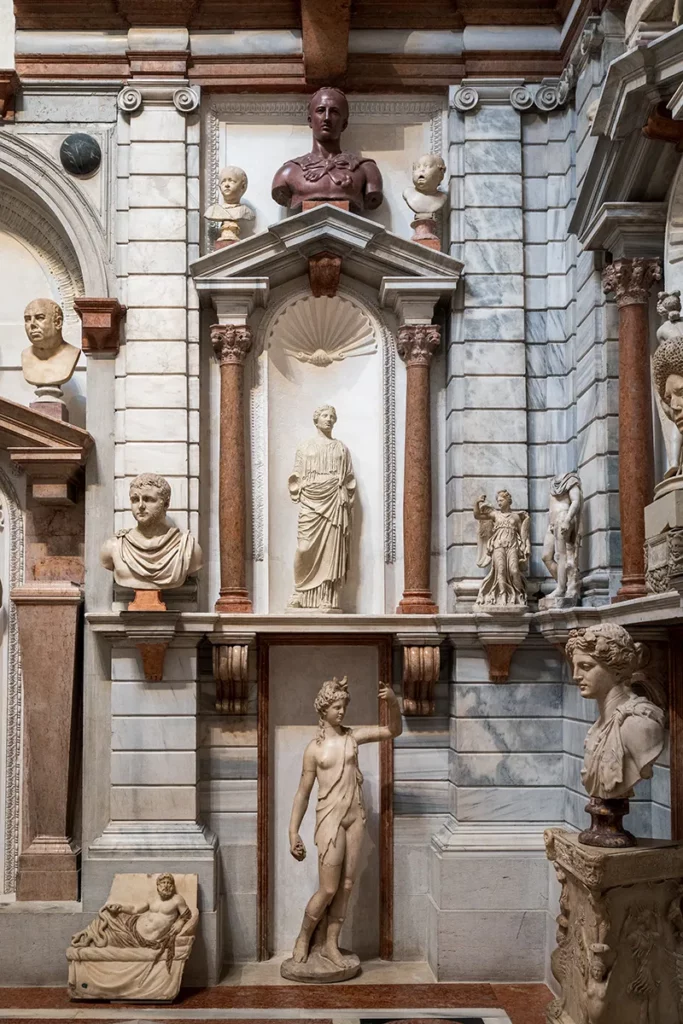
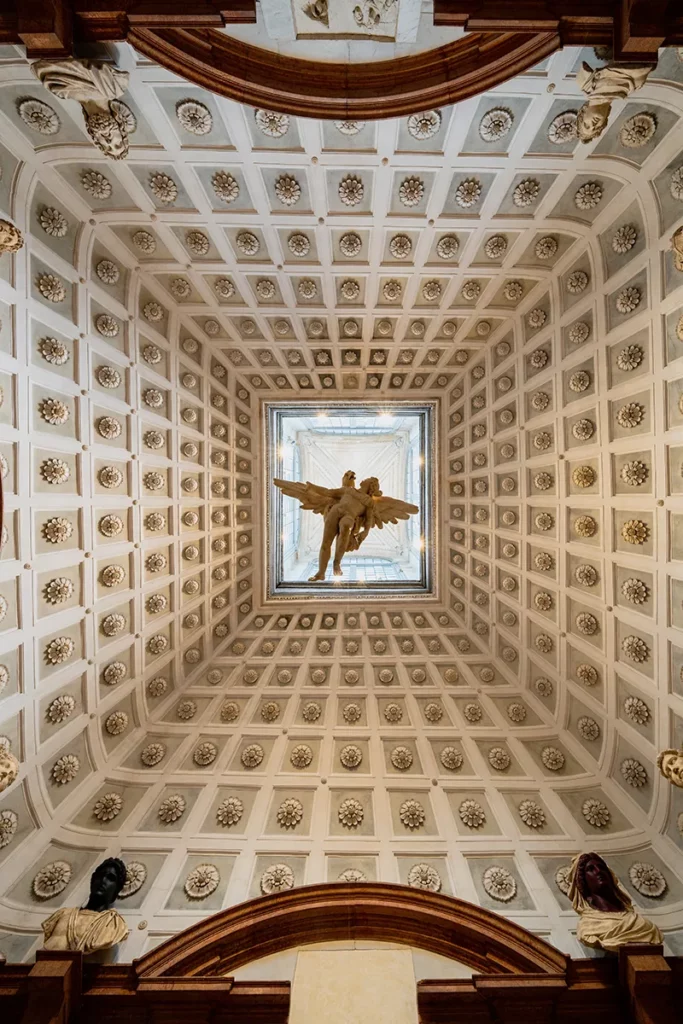
Rugagiuffa, 4858
Daily, except Mondays, from 10am to 7pm
The Palazzo Grassi
Palazzo Grassi is one of the last palaces built in Venice during the 18thcentury. Situated on the banks of the Grand Canal, it is one of the most beautiful buildings in the Serenissima. Today it belongs to French billionaire François Pinault, who has installed his contemporary art collection here.
The visit allows visitors to both enjoy the current exhibitions and discover the interior of this sumptuous palace. The ticket also gives access to the Pinault Collection’s other exhibition space in Venice: Punta della Dogama.
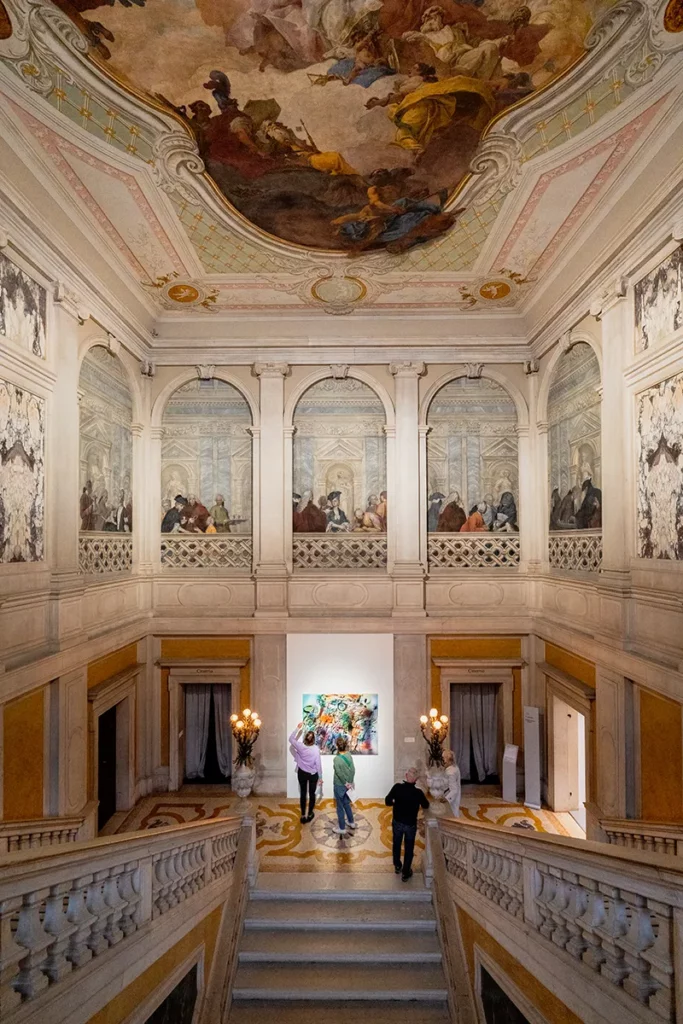

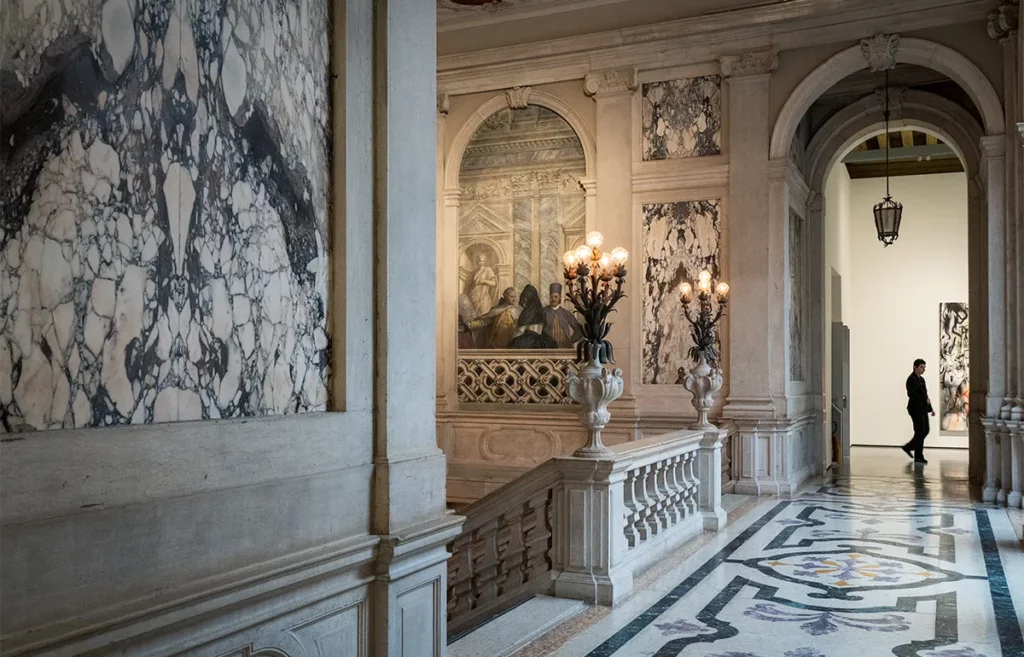
Campo San Samuele, 3231
Online ticketing
Every day except Tuesday, from 10 a.m. to 6.15 p.m.
Where to stay in Venice?
There are plenty of hotels in Venice, but in this very touristy city prices are often high. The key to saving money is to plan ahead! The earlier you book, the more competitive your rates will be.
The city is divided into 6 districts:
- San Marco, the most central, historic heart of Venice
- San Polo, the district near the Rialto Bridge where you’ll also find the market
- Santa Croca, a peaceful residential district
- Dorsodouro, home to many museums
- Cannaregio, the former Jewish quarter, very quiet
- Castello, a more residential district
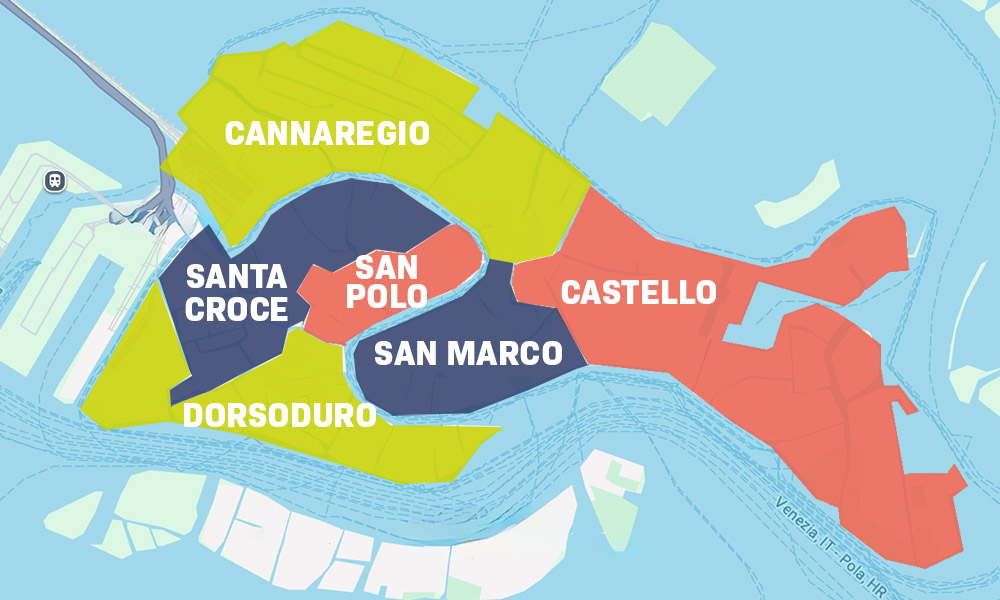
Staying in San Marco means you can explore the whole city more easily, but Venice is a small city, so sleeping in a hotel in another part of town won’t be a problem!
To see the list of available hotels and their rates, enter the dates of your stay on this map:
This card contains affiliate links, which means that I earn a commission if you book your hotel after clicking on it. It doesn’t cost you anything extra, but it helps me to develop Culturez-vous. Thank you!
During my stay, I went to the Ca’ Bragadin e Carabba Hotel located just a few minutes’ walk from the famous Rialto Bridge. The rooms there are spacious, clean and comfortable and the staff are very welcoming.
Interactive map of Venice
Find all the addresses mentioned in this article on this interactive map. Use the menu on the right to filter the results according to your interests (restaurants, museums, churches, etc.).
Good deals to save money
ACTV: access to water buses
To travel by waterbus, you’ll need to buy tickets from ACTV. Single tickets (for a 75-minute journey) are fairly expensive, costing €9.5.
If you’re planning to visit the islands of Murano and Burano, I’d recommend taking a pass for 2, 3 or 7 days (€35, €45 or €65 respectively), which will give you unlimited use of the bus boats.
The VeneziaUnica City Pass
If you’re planning to do several visits, this pass allows you to get up to 20% off. It gives access to the Doge’s Palace, 11 museums and 18 churches for 1, 2, 3 or 7 days. Access to public transport is also available as an optional extra. – From €52.9
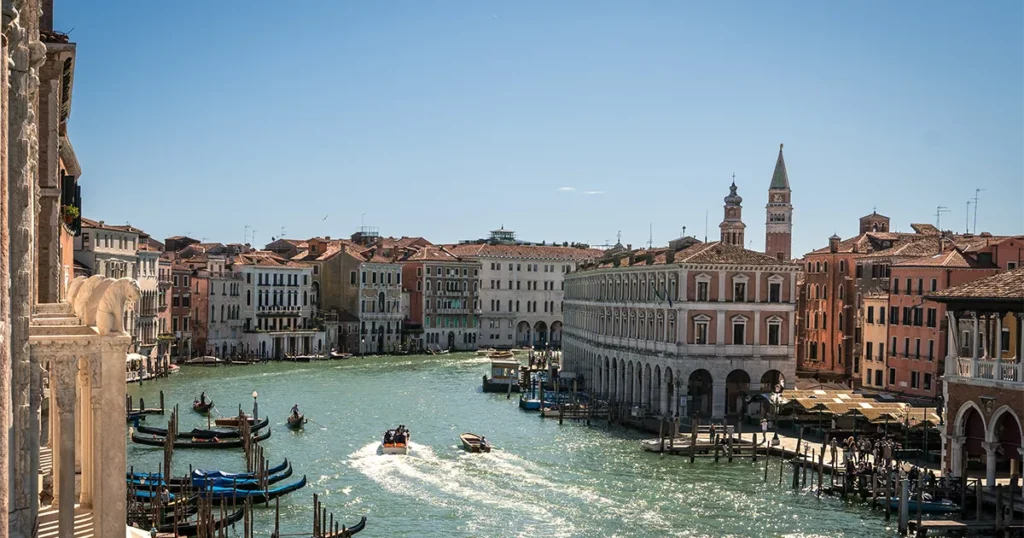
Communicating in Venice: a little Italian lexicon
Of course, Italian is spoken in Venice, but almost everyone also speaks English. French speakers, on the other hand, are rather rare.
Italian vocabulary : a few words to know
Yes : Sì
No : No
Good morning : Buongiorno
Good evening : Buonasera
Hello : Ciao
Goodbye : Arrivederci
Please : Prego
Please : Per favore
Thank you : Grazie
Excuse me : Scusi
How are you ? : Come sta ?
You now have all the information you need to travel to Venice! Enjoy your trip!

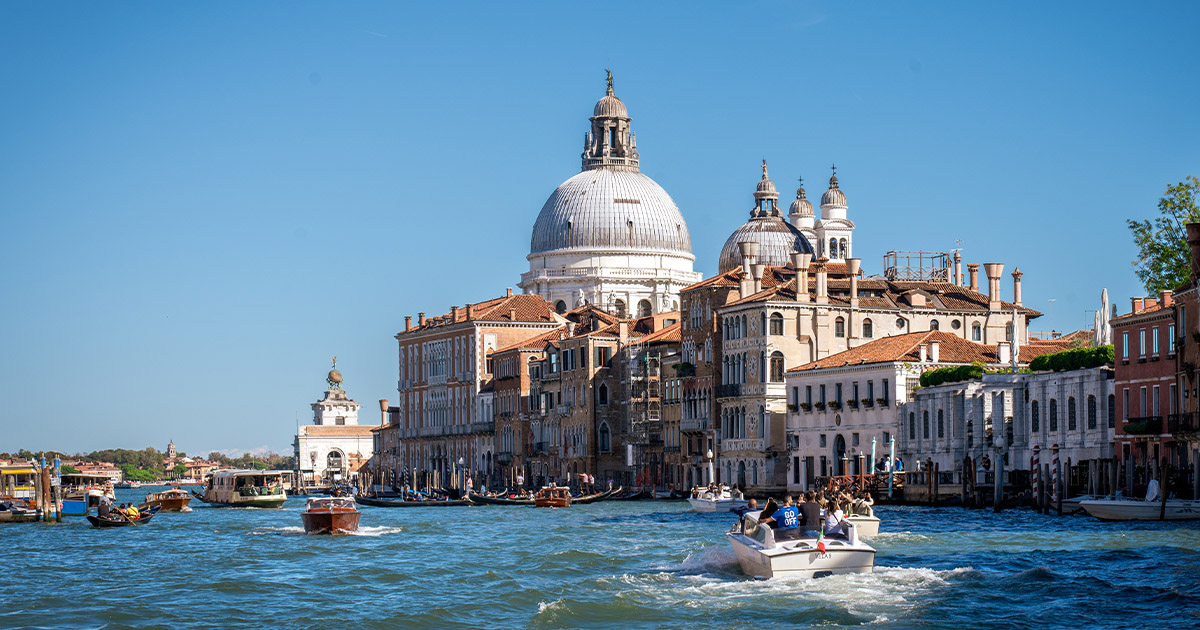



No Comments
Leave a comment Cancel